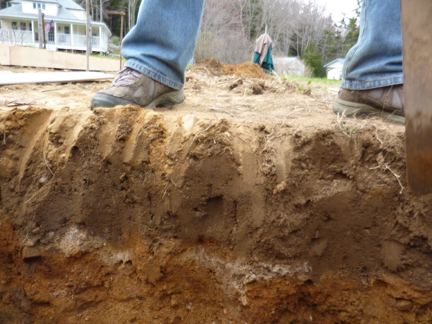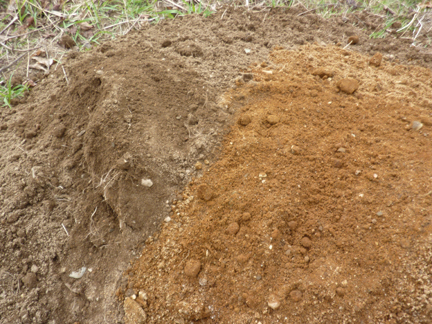French Intensive is not a language class. One of many names for double dug gardens, it is the name I heard most frequently in high school when my Dad and I shared our copies Mother Earth News and Foxfire books. Biodynamic, raised bed, double dug, biointensive—while details may vary, backbreaking dirt digging is a common denominator.
I freely admit it was my idea to try French Intensive gardening. Last year our garden had two successive plantings of beets rot and die as seedlings. The parsnips were skimpy, and instead of eight bushels of potatoes for family and friends, we had just enough to get us to March. Witch grass taunted from between every row and our harvest went from bountiful to adequate. I have been part of this garden for only ten years, but that is long enough to see the decline. I had mentioned my childhood interest in intensive gardening years ago, but the garden was producing, so why change? This year it was time for change.
Three four-by-sixteen raised beds have been created. Digging two feet down may not seem like much, but it feels like taking core samples the hard way. After eight inches of topsoil there was a compact layer that had to be pick-axed through. This hard, almost concrete, layer had deposits of ash from some burn pits possibly eighty years old. After that, loose, rust-colored sand went down twelve inches. It goes deeper, but that was as far as we were going. This was easy shoveling. As we turned it over I was told that my husband’s father dug a trench for a water line from his house to his parent’s, crossing the field we were digging in. It was four feet deep, not our paltry two, and 200 feet long. The story is that not one rock was encountered. Digging into that lovely red granular layer, I believe it. Putting foot to shovel it slid in with no resistance.
The warm brown topsoil on the surface is recent, just two generations. It was built with seaweed, compost and hours of manual labor. A great-great grandfather had sold the original topsoil to the estates in neighboring Seal Harbor, which was not blessed with the rich dark earth of Otter Creek.
Red, gray, brown, white, orange–the colors of these levels are distinct. They do not blend as they transition, but abruptly turn from one substrate to another. It is beautiful to dig a spade through these layers. The colors are an inspiring palette of earth tones. But lovely though the colors are, it is still an intimidating amount of work to make these beds. After eight feet, just half of the first bed, we considered hiring a local do-anything guy to dig for us. It would be an easy out. It was very tempting. But the vision of harvesting our vegetables from a bed we may have planted and tended but did not put sweat and love into deterred us. We made a good but painful choice.
We now know every inch of these beds. We know their colors, and we know their layers. When our vegetables grow, we will know exactly what their roots are in, because we saw it, we touched it, and we have planted our own roots there.



